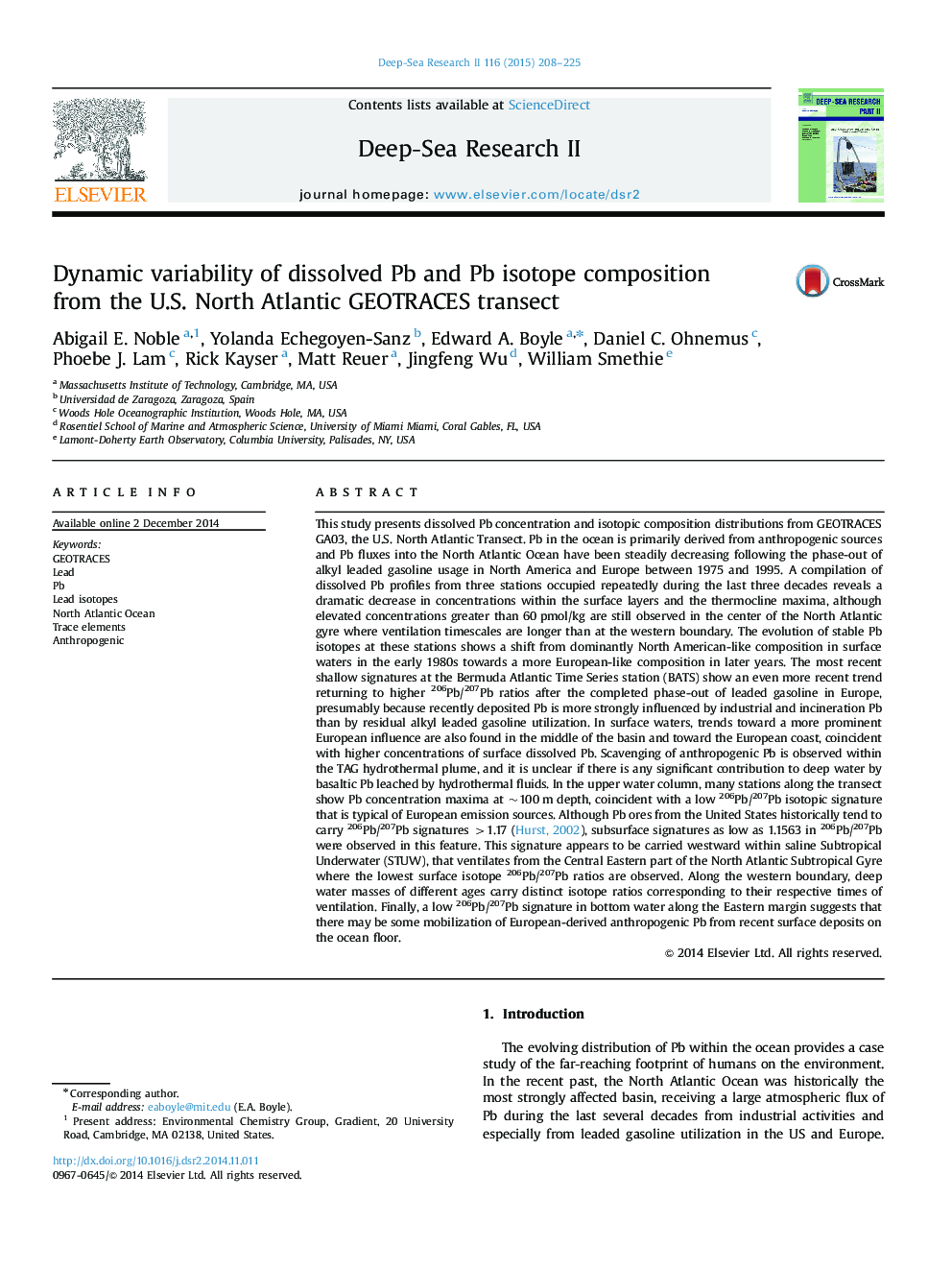| Article ID | Journal | Published Year | Pages | File Type |
|---|---|---|---|---|
| 6384092 | Deep Sea Research Part II: Topical Studies in Oceanography | 2015 | 18 Pages |
Abstract
This study presents dissolved Pb concentration and isotopic composition distributions from GEOTRACES GA03, the U.S. North Atlantic Transect. Pb in the ocean is primarily derived from anthropogenic sources and Pb fluxes into the North Atlantic Ocean have been steadily decreasing following the phase-out of alkyl leaded gasoline usage in North America and Europe between 1975 and 1995. A compilation of dissolved Pb profiles from three stations occupied repeatedly during the last three decades reveals a dramatic decrease in concentrations within the surface layers and the thermocline maxima, although elevated concentrations greater than 60Â pmol/kg are still observed in the center of the North Atlantic gyre where ventilation timescales are longer than at the western boundary. The evolution of stable Pb isotopes at these stations shows a shift from dominantly North American-like composition in surface waters in the early 1980s towards a more European-like composition in later years. The most recent shallow signatures at the Bermuda Atlantic Time Series station (BATS) show an even more recent trend returning to higher 206Pb/207Pb ratios after the completed phase-out of leaded gasoline in Europe, presumably because recently deposited Pb is more strongly influenced by industrial and incineration Pb than by residual alkyl leaded gasoline utilization. In surface waters, trends toward a more prominent European influence are also found in the middle of the basin and toward the European coast, coincident with higher concentrations of surface dissolved Pb. Scavenging of anthropogenic Pb is observed within the TAG hydrothermal plume, and it is unclear if there is any significant contribution to deep water by basaltic Pb leached by hydrothermal fluids. In the upper water column, many stations along the transect show Pb concentration maxima at ~100Â m depth, coincident with a low 206Pb/207Pb isotopic signature that is typical of European emission sources. Although Pb ores from the United States historically tend to carry 206Pb/207Pb signatures >1.17 (Hurst, 2002), subsurface signatures as low as 1.1563 in 206Pb/207Pb were observed in this feature. This signature appears to be carried westward within saline Subtropical Underwater (STUW), that ventilates from the Central Eastern part of the North Atlantic Subtropical Gyre where the lowest surface isotope 206Pb/207Pb ratios are observed. Along the western boundary, deep water masses of different ages carry distinct isotope ratios corresponding to their respective times of ventilation. Finally, a low 206Pb/207Pb signature in bottom water along the Eastern margin suggests that there may be some mobilization of European-derived anthropogenic Pb from recent surface deposits on the ocean floor.
Related Topics
Physical Sciences and Engineering
Earth and Planetary Sciences
Geology
Authors
Abigail E. Noble, Yolanda Echegoyen-Sanz, Edward A. Boyle, Daniel C. Ohnemus, Phoebe J. Lam, Rick Kayser, Matt Reuer, Jingfeng Wu, William Smethie,
